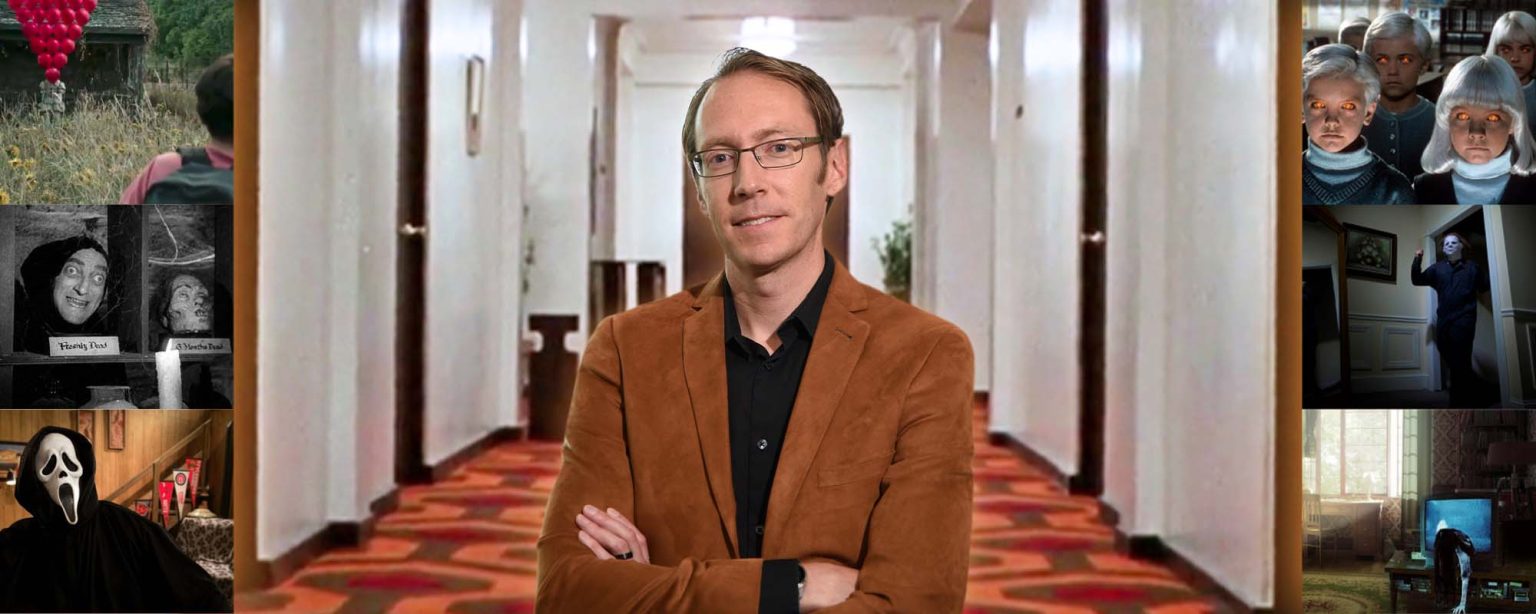Most people don’t like to be scared. Joel Hiller lives for it.
As a communications specialist at Idaho National Laboratory in the Nuclear Science & Technology directorate, Hiller works to demystify and educate the public about the important research taking place at INL.
Off the clock, one of Hiller’s favorite hobbies is his love for horror movies.
For the last several years he’s programmed his own “31 Days of Horror” in October and dedicates the month to watching and cataloging scary films for his own enjoyment and to discuss with friends.
Why?
As Hiller explained in a recent lunchtime presentation for INL colleagues: Horror movies allow the viewer to learn about humanity, feel adrenaline safely, and, if nothing else, “your life looks better by comparison.” Co-workers meeting on Microsoft Teams with Hiller often get a taste of his interest through the virtual backgrounds he displays every October.
What makes a good horror film? “A good horror movie is a different kind of movie that has horror elements in it,” he said. “Good horrors are dramas or comedies at their core. Being able to relate to the characters makes it interesting.”
 “Alien,” the 1979 Ridley Scott film, is essentially science fiction, but it contains one of the most terrifying scenes in motion picture history. Some horror movies can even be funny. “Shaun of the Dead,” from its very title, tells you it’s something of a parody of director George Romero’s “Dawn of the Dead” series. But the 2004 British film about a zombie apocalypse has some impressive frights tucked among the silliness. “The Babadook” is a family drama about a widowed mother terrorized by grief and resentment.
“Alien,” the 1979 Ridley Scott film, is essentially science fiction, but it contains one of the most terrifying scenes in motion picture history. Some horror movies can even be funny. “Shaun of the Dead,” from its very title, tells you it’s something of a parody of director George Romero’s “Dawn of the Dead” series. But the 2004 British film about a zombie apocalypse has some impressive frights tucked among the silliness. “The Babadook” is a family drama about a widowed mother terrorized by grief and resentment.
In his presentation, Hiller categorized horror films by subgenres like supernatural, cosmic, psychological, creature features and slashers, and rated the genres on a scare-factor meter, with green being not so scary to red being nightmare inducing.
Hiller’s fascination with terror began when he was about 10 and saw “Aliens,” the 1986 sequel to “Alien,” on network television. “I remember being scared and thrilled at the same time,” he said.
Looking for those same chills in other films, Hiller started renting horror movies. He discovered what many movie fans come to realize. There are a lot of bad movies out there, and horror flicks seem to have more than their fair share.
His obsession continued through his teen and college years. He even took a film class or two at Brigham Young University. Along the way Hiller found a friend and co-worker who shared his fascination, and they began watching episodes of “Unsolved Mysteries” during their lunch hour.
Gradually, he tired of random, hit-and-miss selections and began seeking out higher quality fare, and programming a curated list of thrillers for the month leading up to Halloween.
This year’s schedule includes “The Descent,” “Suspiria,” and “Bram Stoker’s Dracula.” “The Mist” tacks a different ending on the Stephen King story of the same name, one that King himself likes better. Director David Cronenberg will get two entries: “Videodrome” and “Shivers.” Foreign selections include “Thirst” from Korea and “Audition” from Japan.
While he occasionally hosts watch parties with friends, the husband and father of four finds viewing a solitary pursuit, often watching on his Chromebook with breaks to help children with homework or attend to household duties. Even his wife, Katie, rarely joins in. “She doesn’t like anything scary,” Hiller said.
Sometimes, he will venture out to a theater as he did with the recent hit, “A Quiet Place.” The film so enthralled the audience that the theater was dead quiet. “I was afraid to open a candy wrapper,” Hiller said. That’s the essence of a good movie, drawing you into the action so you experience it with the characters.
Hobbies are fulfilling, and fulfilled people make more productive employees. Hobbies unearth hidden skills, alleviate stress, unite you with others, and improve quality of life — all things that will help you function better at work. See other stories about Idaho National Lab employees.





